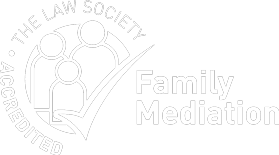
Relocation checklist – bringing an application for relocation
Before you bring a formal application
Things to consider at the outset
- Are any court orders already in place regarding the child(ren) in terms of residence?
- What are the reasons for the relocation?
- Is the proposed relocation within the UK or international?
- Is the proposed relocation temporary or permanent?
- What arrangements do you envisage for the child to spend time with the other parent
- What arrangements/possibilities will be in place for the child’s education and other aspects of life
- Is there a risk of domestic violence which prevents you discussing the proposed relocation with the other parent?
Discussion with the other parent
- Either face to face or through solicitors
Consider mediation
- You must attend a Mediation Information and Assessment Meeting (MIAM) before making an application (as must the other parent) unless you can claim an exemption (for example because of domestic violence or child protection concerns)
- You may continue to pursue mediation after the application has been made if there is a time factor involved (for example the start of a new term or the date by which a new job must be accepted)
Bringing the Relocation Application
- Specific issue order pursuant to s8 of the Children Act 1989
- Form C100 – should be completed as accurately and as fully as possible without raising spurious or unsubstantiated allegations unless this is warranted due to a risk of harm to the child(ren) in which case form C1A should supplement the C100 form.
- C100 must be filed at the local Family Court where it will be allocated to a judge and served on the Respondent parent
Before the First Hearing Dispute Resolution Appointment (FHDRA)
- Prepare joint letter of instruction with the Respondent’s legal adviser for any expert that will be involved
- Make full preparations/plans in relation to the relocation
- Draw up a succinct and well-focused position statement, summarising
- The order sought
- The reasons for the application
- The points in favour of the application
- Proposed arrangements for contact
- Any important deadlines relevant – a new school term
- A chronology, if relevant
FHDRA
- At the FHDRA the court will give directions including for the filing of statements, expert evidence and in the majority of cases, a welfare report. A timetable will be set out which must be followed.
After the FHDRA
- Comply with any timetabled steps to resolve outstanding issues
- If necessary, prepare and file any evidence ordered at the First Hearing Dispute Resolution Appointment (or in subsequent orders) in advance of the Final Hearing
Before a Final Hearing
- Prepare a detailed statement setting out all the core information about the relocation and the reasons for it. The statement should avoid unnecessarily criticising the Respondent or playing down his (or her) role in the children’s lives. The focus should be on what is in the best interests of the children.
Order made at Final Hearing
If granted permission to remove a child(ren) The order made at the Final Hearing will likely contain contact provisions and safeguards in support of contact for the remaining parent which may also include the provision of undertakings by the relocating parent to secure the same order in the new jurisdiction (called a ‘mirror order’)
Call us now on 020 3811 2894 for a confidential and no obligation initial consultation or email [email protected]








